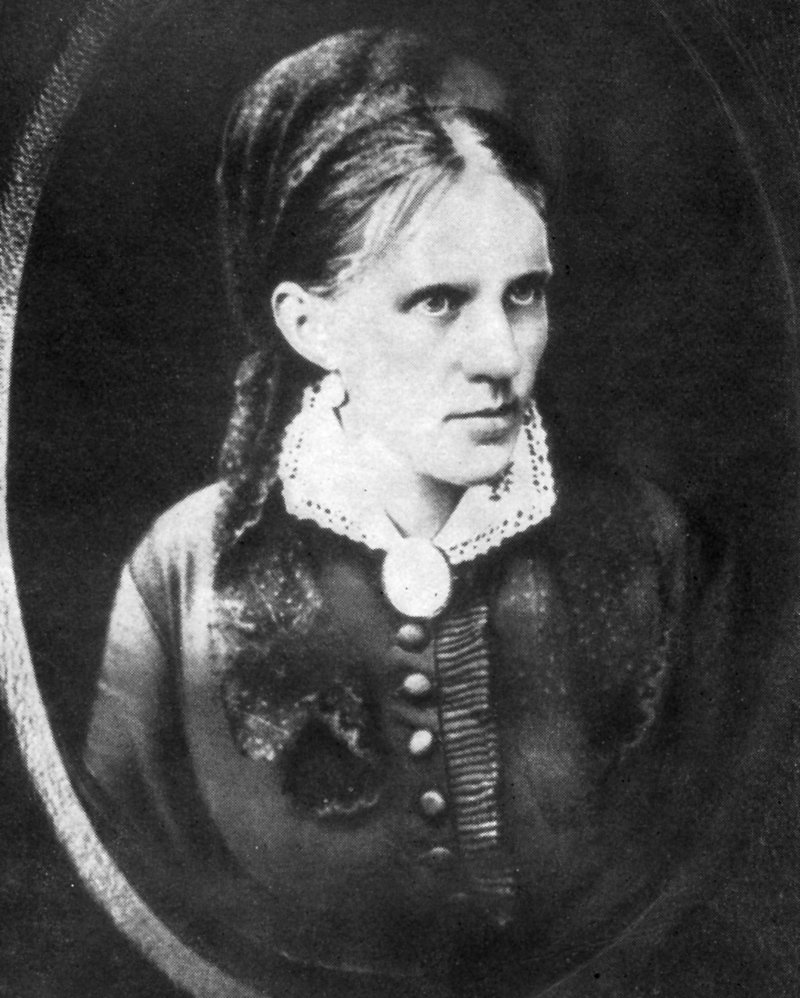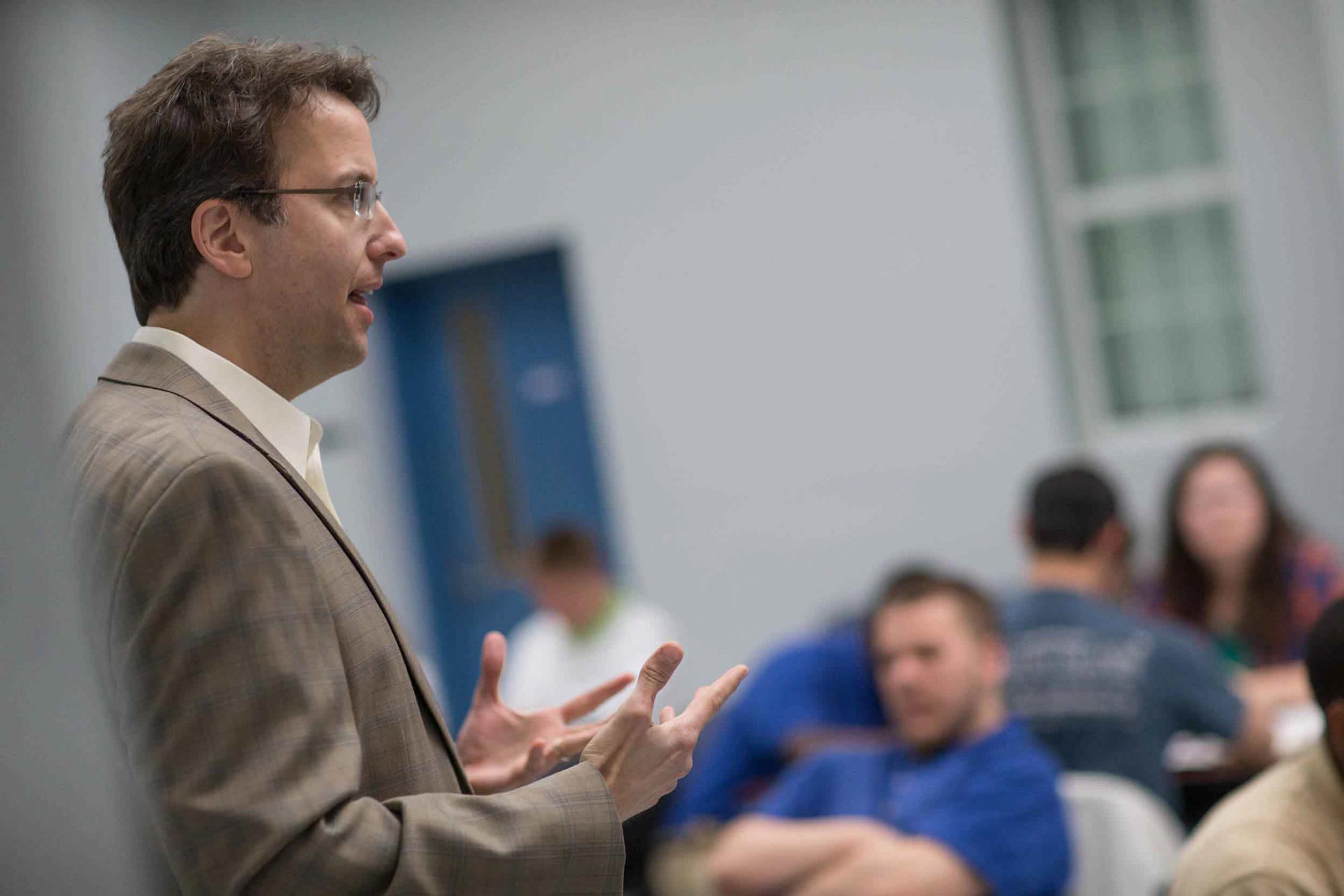
Kaufman initially became involved with community reading programs in 2010, when The Death of Ivan Ilyich by Russian writer Leo Tolstoy was included in the NEA Big Read program. As communities across the country read the novel, Kaufman was invited to give talks and facilitate workshops to provide additional context for Tolstoy’s work.
“One of the workshops I did was in a prison,” Kaufman says. “It was really transformative, because I came away from that experience with a new understanding of this work that I thought I knew. And so I thought, if this kind of an experience can have such an impact on me, what if I were to create a class where I take my own students and put them in a similar situation?”
That idea soon became Books Behind Bars, a University of Virginia community-based literature course that pairs university students with youth incarcerated at a maximum security juvenile correctional center. Participants meet weekly to discuss Russian literature and explore topics including meaning, purpose, and social justice.
“I think the opportunity to sit down with your peers, almost your same age, from a very different world and hear their perspectives helps you appreciate the relevance of literature for both groups,” says Kaufman.
“Russian literature levels the playing field, because neither the UVA students nor the correctional center students know much about it,” he continues. “They’re struggling to figure this stuff out together, and it really creates a community of equals rather than a hierarchy.”
He notes that discussing literature with a group is a compelling way to connect. “They hear insights and interpretations that are unique and eye-opening to them…One thing that I’ve learned from Books Behind Bars is how powerful that interaction is, that conversation—it just keeps you motivated. It also helps you see things that you wouldn’t have seen.”

For Kaufman, one of those things was the brilliance of Fyodor Dostoevsky, the Russian writer who authored novels including Crime and Punishment and The Brothers Karamazov. “I started to appreciate the depth and the genius of Dostoevsky in a way that I had never done before, because of the way that he resonated with these incarcerated populations—Dostoevsky himself was incarcerated, [and in his work] he deals with themes of crime and redemption.”
Kaufman started reading biographies to learn as much as possible about Dostoevsky, and he repeatedly came across passing mentions of Anna Dostoevskaya, the writer’s second wife. Although often presented as a background figure, Kaufman discovered—via Anna’s memoirs, diaries, and letters, as well as the memoirs of her contemporaries—that she had an enormous impact not only on Dostoevsky but on literary history.

“[Anna Dostoevskaya] was a powerhouse, an extraordinary woman in her own right, and needed her own story told,” Kaufman says. In his recently published book, The Gambler Wife: A True Story of Love, Risk, and the Woman Who Saved Dostoyevsky, he seeks to bring Anna’s contributions to the forefront, shining much-deserved light on a previously untold story.
Anna met Fyodor Dostoevsky when she took a position as his stenographer—a decision influenced by her awareness of Russia’s first feminist movement. According to Kaufman, the radical Russian feminists of the 1860s were counter-cultural figures, flouting the conventions of the era by wearing pants, cutting their hair short, and smoking in public. Instead of traditional marriage, they sought independence and career opportunities.
“Anna came of age at precisely the time that this feminist movement was taking off,” Kaufman says. “[The job opportunity with Dostoevsky] was an opportunity for her to earn her own living and to forge a path towards independence.”
From the beginning, Anna was instrumental to Dostoevsky’s professional success. As his stenographer, she helped him finish his novel The Gambler in three weeks in order to meet his publisher’s deadline and avoid professional ruin.
“The relationship started from the very beginning with her saving his career,” says Kaufman. “That would become emblematic of the role that she would play over and over again.”
Eventually, Anna would start a publishing firm to publish Dostoevsky’s books, becoming Russia’s first solo female publisher. A savvy businesswoman, she earned more income for Dostoevsky than he would have with other publishers, and the couple also retained artistic control over his work.
Along with her role as his publisher, Anna’s contributions to Dostoevsky’s career ranged from practical to artistic. She literally saved the manuscript to the novel The Adolescent when it was left behind in a suitcase at a steamship dock. She also read Dostoevsky’s drafts and provided input, helping him make creative decisions. “Her artistic judgment was really profound,” says Kaufman. “It’s something she’s never given credit for.”
After her husband’s death in 1881, Anna continued to run the publishing firm. She published several editions of Dostoevsky’s complete collected works, earning the equivalent of $5 million and securing his place in the Russian literary canon.
“She fiercely protected his legacy and disseminated his writings long after his death. That was essential to driving and maintaining his reputation and really creating the narrative about Dostoevsky that we have today,” says Kaufman.
Thanks to the efforts of Anna Dostoevskaya, her husband’s writing continues to resonate with audiences around the world, including Books Behind Bars participants. The Gambler Wife—and the community reading programs that inspired the book—illustrates the power of sharing stories that previously haven’t been given a platform.
